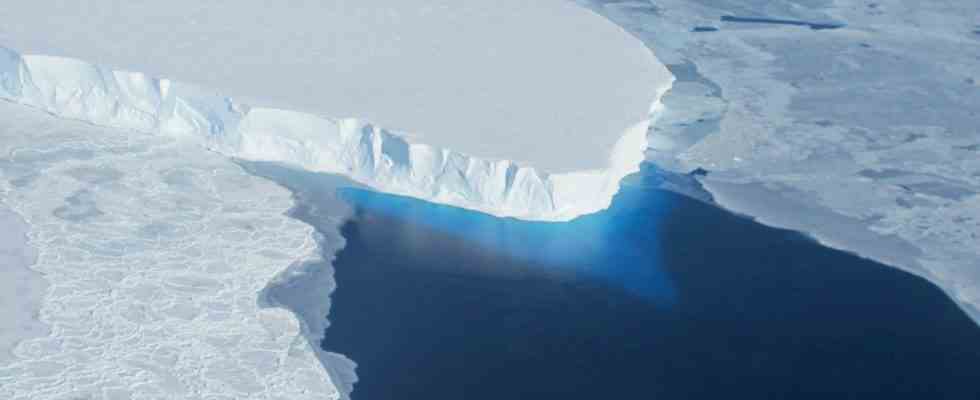As of: 03/22/2023 5:03 p.m
The ice sheet in Antarctica is melting – researchers have now calculated how much. Around three trillion tons have disappeared in the Amundsen Sea region alone since 1996. This also has consequences for global sea levels.
Around 3.3 trillion tons of ice have been lost in western Antarctica over the past 25 years. That’s according to a new study in the journal “Nature Communications“. The researchers examined the ice masses in the Amundsen Sea region with the help of satellite data and regional climate models, among other things.
Ten meter thick layer of ice all over Germany
“That’s a very significant amount,” comments Torsten Albrecht from the Potsdam Institute for Climate Impact Research (PIK). tagesschau.de the analysis. “For comparison: With this mass, you could lay an ice layer about ten meters high over the whole of Germany.” This is only a fraction of the total ice mass in Antarctica. But according to PIK researchers, West Antarctica is one of around a dozen tipping points in the climate system.
According to the authors of the study, the ice loss they calculated alone caused the global sea level to rise by almost a centimeter. “When we consider that sea levels have risen by a little over 20 centimeters since the beginning of industrialization – and a large part of this is only due to the greater expansion of warmer water – the magnitude of this event on a global scale becomes clear.” , according to Albrecht. Overall, there is enough ice and snow in the region that the sea level could rise by a meter if everything were to melt.
Not enough snowfall
The main reasons for the loss of ice masses in the Amundsen Sea are changes in sea temperature and changes in currents, which lead to the loss of ice shelves and faster glacier flow rates. As a result, more ice breaks off the glaciers and drifts into the sea – researchers speak of “calving”.
In this way, ice is lost permanently; however, the losses are usually recovered by snowfall on the surface of the ice masses and over the landmass. However, this was no longer the case during the observation period. “This imbalance means an overall net loss of ice mass,” explains Albrecht.
According to the study, there were a few years with very little snowfall, such as the period from 2009 to 2013. During this period, the loss of ice mass was particularly high. But even the years 2019 and 2020, when a lot of snow fell, could not compensate for the absolute loss.
More losses expected
The researchers are also not very optimistic about the future because of their results: “The 20 glaciers in West Antarctica have lost a great deal of ice in the last quarter of a century, and there are no signs that this process will reverse in the foreseeable future,” he explained Lead author of the study, Benjamin Davison of the University of Leeds.
According to ice researcher Albrecht, there will probably be more snowfall in the future. “But that alone will not be enough to compensate for the losses caused by increasing global warming. This means that ice loss will continue.”

